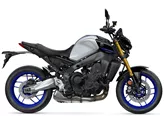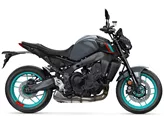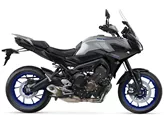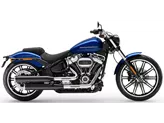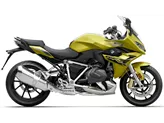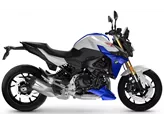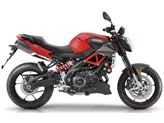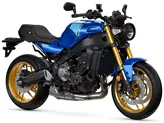Yamaha MT-09 2016 vs. Suzuki GSR 750 2017

Yamaha MT-09 2016

Suzuki GSR 750 2017
Overview - Yamaha MT-09 2016 vs Suzuki GSR 750 2017
In terms of technical specifications, the Yamaha MT-09 2016 and the Suzuki GSR 750 2017 have some similarities. Both bikes have an inline engine type and a front tyre width of 120mm with a diameter of 17 inches. They also share the same rear tyre width and diameter. However, there are some notable differences between the two models.
The Yamaha MT-09 2016 has a more powerful engine, with an engine power of 115 HP compared to the Suzuki GSR 750's 106 HP. The Yamaha also has a higher torque of 87.5 Nm compared to the Suzuki's 80 Nm. The Yamaha has a three-cylinder engine with a displacement of 847ccm, while the Suzuki has a four-cylinder engine with a displacement of 749ccm.
In terms of chassis, the Yamaha MT-09 2016 has an aluminum frame, while the Suzuki GSR 750 2017 has a steel frame. Both bikes have a twin-tube frame type. The Yamaha has a slightly shorter wheelbase of 1440mm compared to the Suzuki's 1450mm. Both bikes have the same seat height of 815mm.

Yamaha MT-09 2016
When it comes to weight, the Yamaha MT-09 2016 is lighter with a kerb weight of 188kg, while the Suzuki GSR 750 2017 is heavier with a kerb weight of 211kg. The Suzuki also has a larger fuel tank capacity of 17.5 liters compared to the Yamaha's 14 liters.
In terms of strengths, the Yamaha MT-09 2016 has a wonderfully powerful three-cylinder powerplant, three power modes, and a fully adjustable chassis. It also comes with a quickshifter as standard, providing a sporty and convenient riding experience. The bike has a sporty upright seating position, good brakes, and aggressive looks. Additionally, it features traction control, enhancing safety and control.
On the other hand, the Suzuki GSR 750 2017 has an attractive overall appearance and stable handling. The suspension elements have been successfully tuned, providing a comfortable ride. The bike also has easy-to-read instruments, ensuring clear visibility while riding.

Suzuki GSR 750 2017
However, there are some weaknesses for each model. The Yamaha MT-09 2016 has a saddle that may be a little too hard for long tours, potentially affecting comfort. Additionally, the license plate holder on the swingarm offers less splash protection than a conventional one.
The Suzuki GSR 750 2017 has a brake system that requires a lot of manual force, which may be a disadvantage for some riders. The box swingarm is also not particularly aesthetically pleasing.
In conclusion, the Yamaha MT-09 2016 and the Suzuki GSR 750 2017 have their own strengths and weaknesses. The Yamaha offers a more powerful engine and adjustable chassis, while the Suzuki has an attractive appearance and stable handling. Riders should consider their preferences and priorities when choosing between these two models.
Technical Specifications Yamaha MT-09 2016 compared to Suzuki GSR 750 2017
Pros and Cons in comparison
Pros and Cons in comparison
Yamaha MT-09 2016

The Yamaha MT-09 did not need to be reinvented for the coming season - it already was extremely well done almost four years ago. Instead, the Japanese focus on fine-tuning and adding practical, contemporary gimmicks such as traction control and automatic shifting. Due to the Euro4 standard, however, the engine management has been changed once again and offers an emphatically powerful but well controllable power delivery in standard mode; the power explosion of the first generation is now no longer offered even by the sharper A mode. The biggest change, recognisable at first glance, is the, in my opinion, extremely successful design with the more aggressive front and the newly designed rear. All in all, an even snazzier naked bike that was clearly built for the fun of motorcycling.
Suzuki GSR 750 2017

A razor-sharp design with an aggressive front and narrow rear - just as speedy street raiders have always wanted. It is a pity that the rear swingarm was neglected (officially for weight reasons, unofficially for cost reasons), and the front dual-piston brake system seems a little weak. However, the performance during the ride, both at high speed and in tight corners, is quite good.
Price Comparison Avarage Market Price Yamaha MT-09 vs Suzuki GSR 750
There are a few key differences between a Yamaha MT-09 2016 and a Suzuki GSR 750 2017. There are the same number of bikes of both models available on the 1000PS.de marketplace, specifically 11. It takes less time to sell a Yamaha MT-09 with 87 days compared to 117 days for a Suzuki GSR 750. Since model year 2013 1000PS.de editors have written 57 reviews for the Yamaha MT-09 and 12 reviews for the Suzuki GSR 750 since model year 2011. The first review for the Yamaha MT-09 was published on 6/10/2013 and now has more than 39,900 views. This compares to more than 5,400 views for the first review on Suzuki GSR 750 published on 10/5/2010.


